Abstract
Under controlled conditions 16 people (eight non-medical) inexperienced in the radiology of occupational lung diseases repeatedly classified 300 selected chest radiographs using the 1971 ILO U/C International Classification of Radiographs of Pneumoconioses. Eight experienced medical readers had previously classified 220 of the selected radiographs for profusion of small rounded opacities. Variability among readers was greater in experimental panels than among the experienced readers. But the average consistency between pairs of novice readers in their use of the 12 categories of profusion for the same radiographs was similar (about 29%) to the average consistency among the experienced readers. Subsequent work with nine of the participants showed that eight of them were able to produce classifications of coal miners' chest radiographs that correlated well with estimates the miners' exposures to respirable coal mine dust. It is concluded that the ILO classification scheme provides a sound descriptive system for recording the appearances of chest radiographs. Under controlled conditions the scheme may be used for epidemiological studies by those with no specialist knowledge or clinical experience. This presupposes that the radiographs concerned will have been examined previously for diagnostic purposes by a suitable qualified physician.
Full text
PDF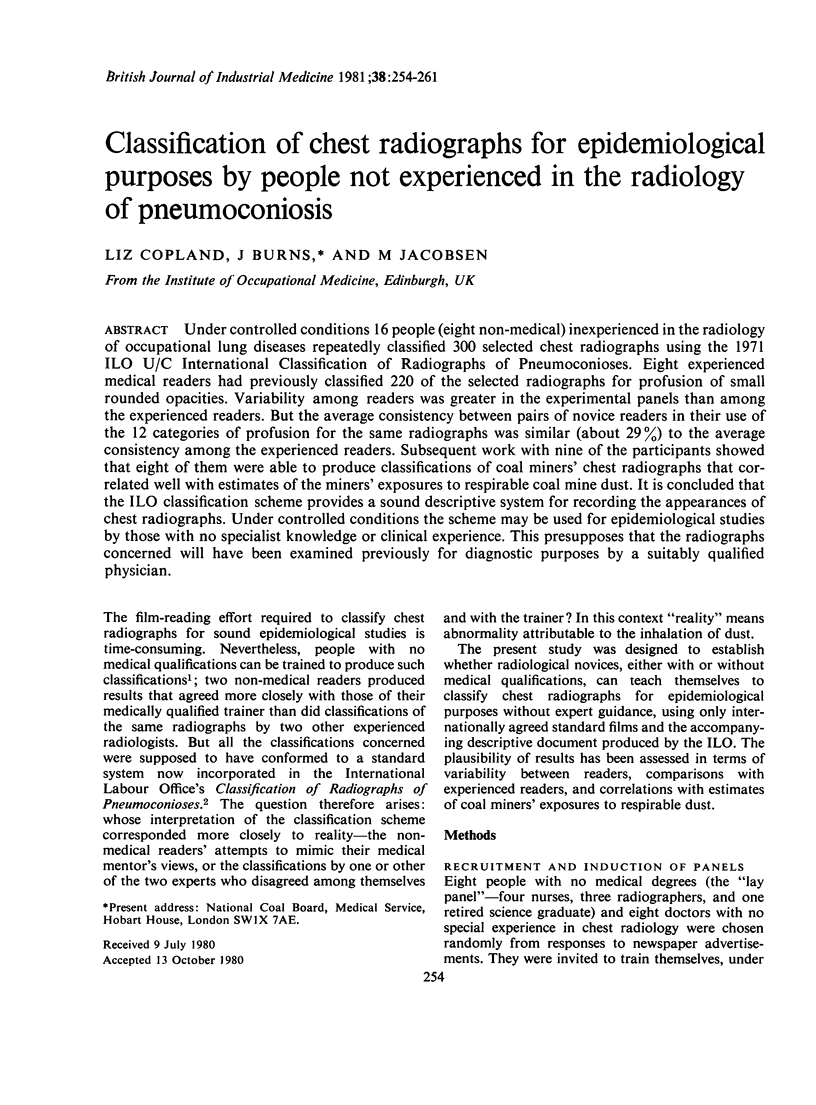
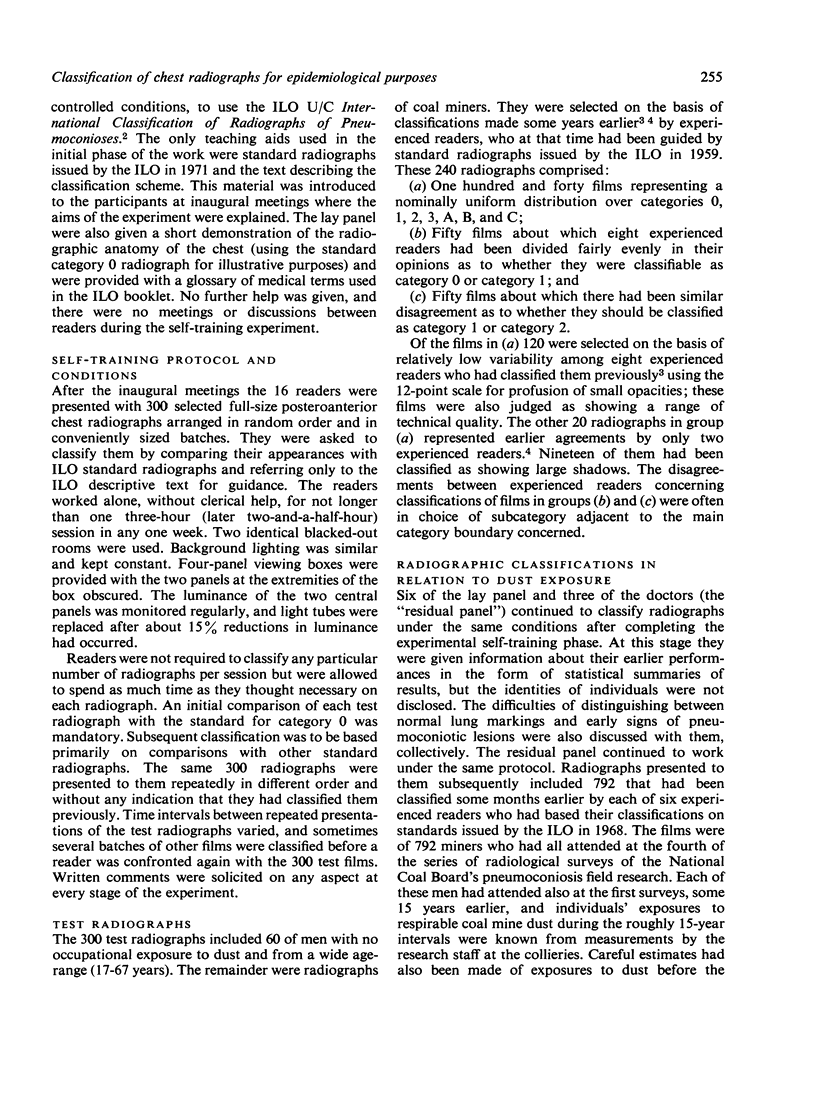
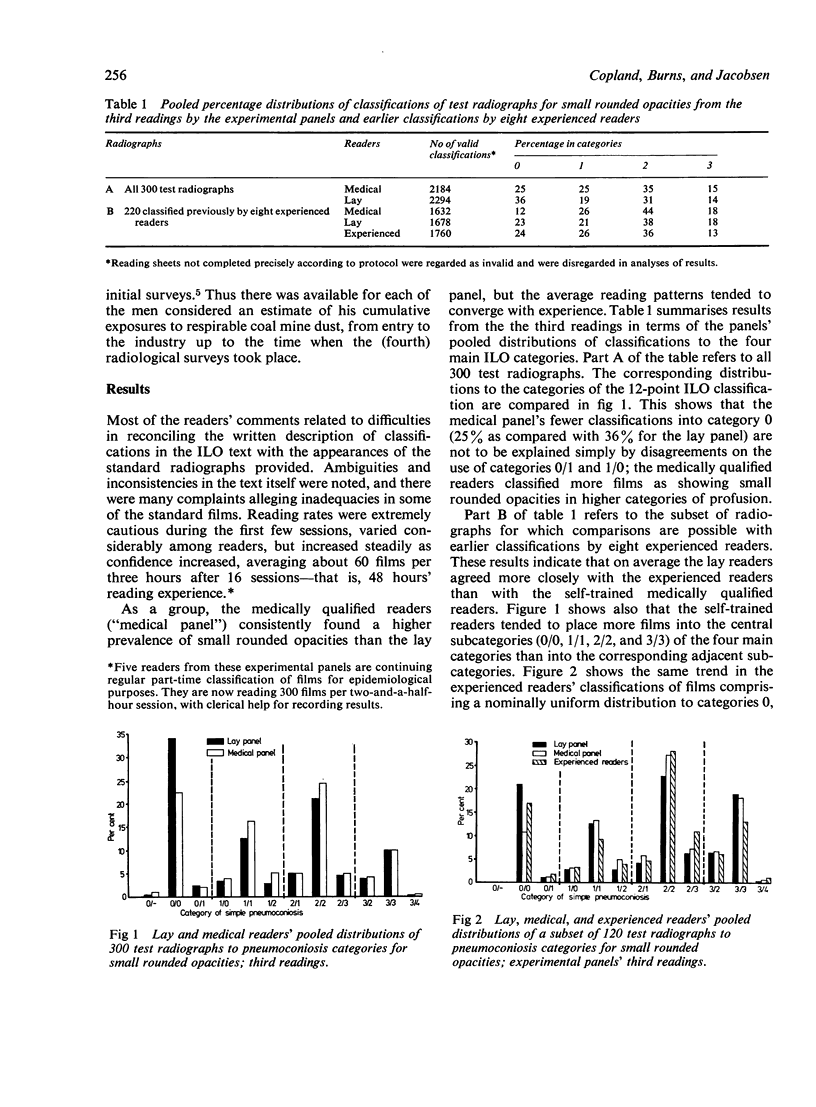
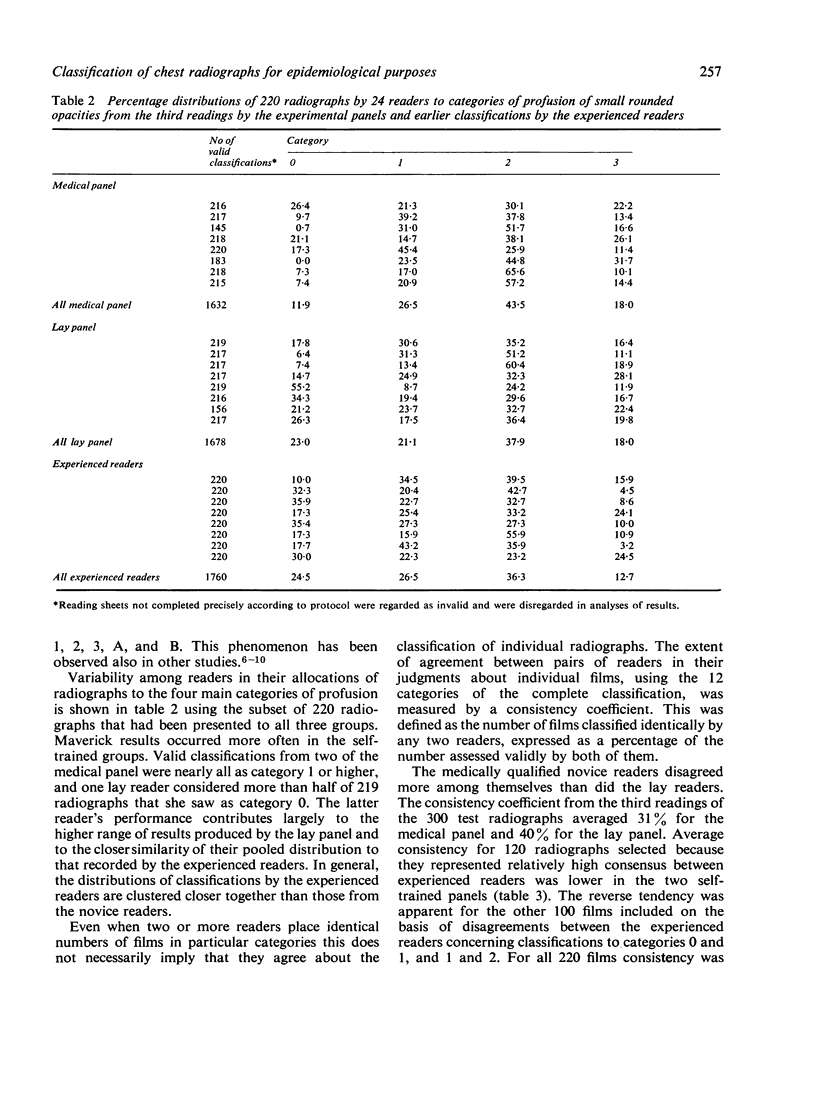
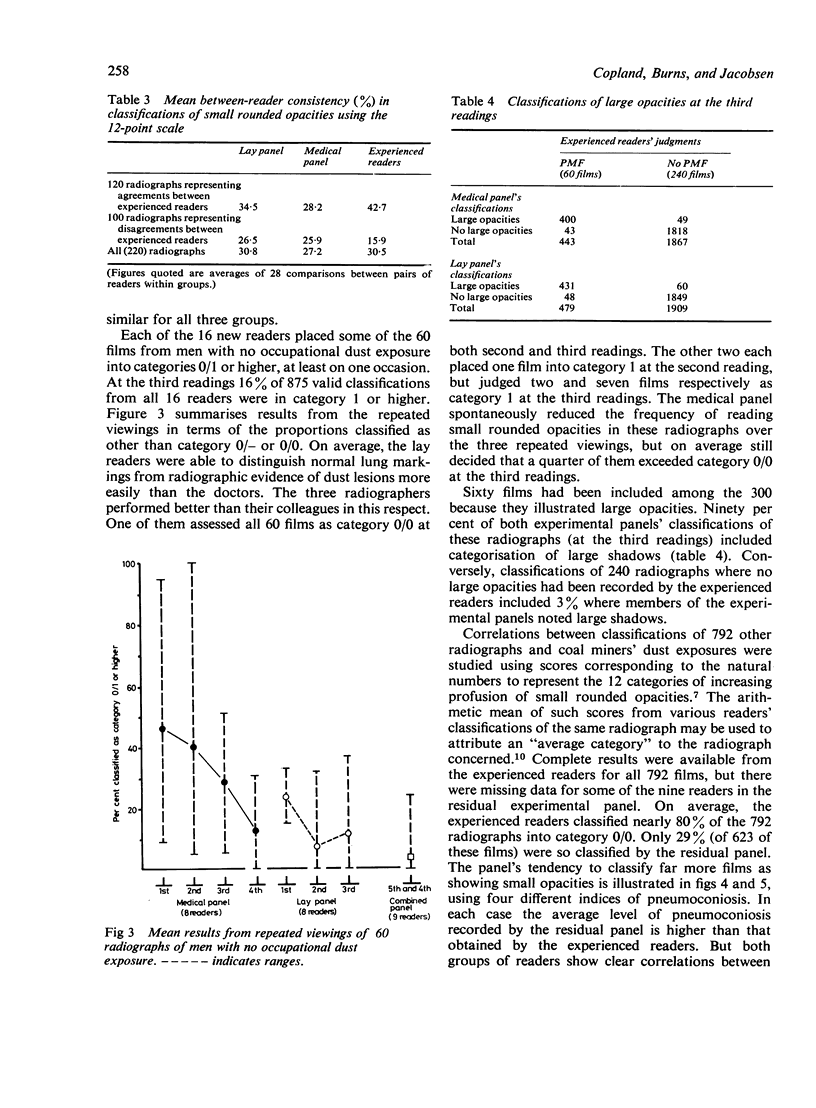
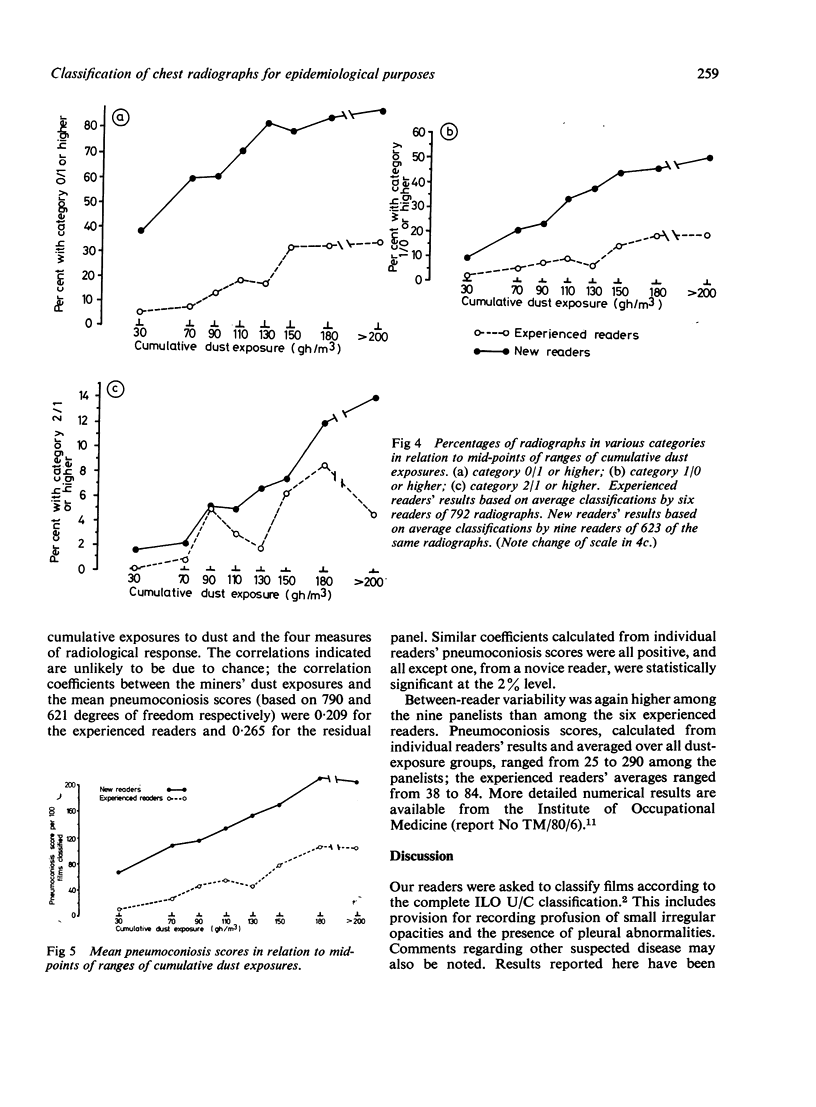
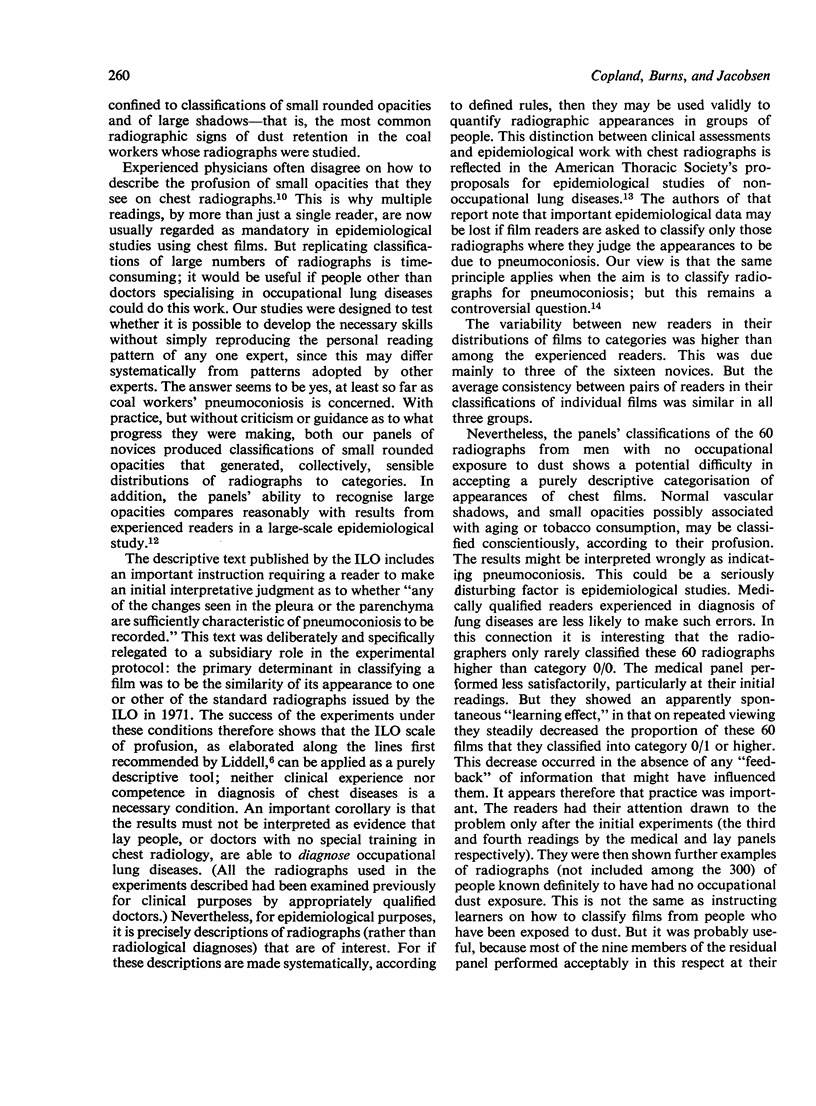
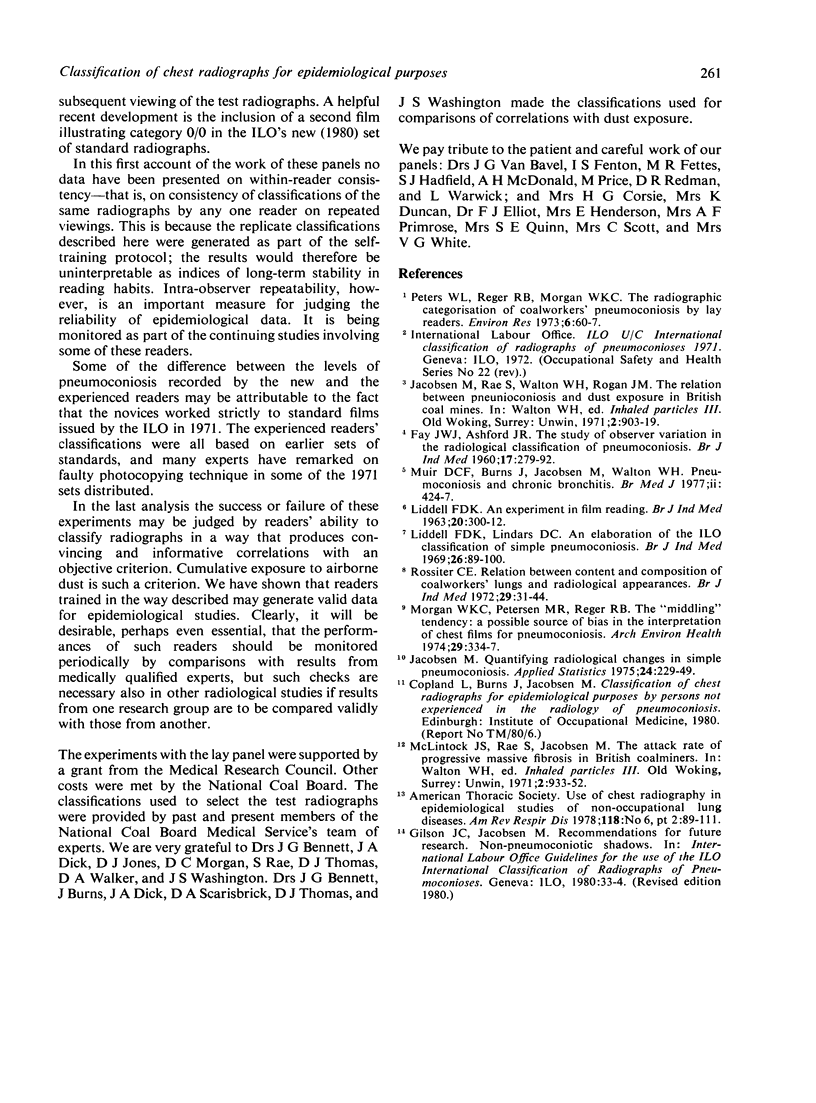
Selected References
These references are in PubMed. This may not be the complete list of references from this article.
- FAY J. W., ASHFORD J. R. The study of observer variation in the radiological classification of pneumoconiosis. Br J Ind Med. 1960 Oct;17:279–292. doi: 10.1136/oem.17.4.279. [DOI] [PMC free article] [PubMed] [Google Scholar]
- Jacobsen M., Rae S., Walton W. H., Rogan J. M. The relation between pneumoconiosis and dust-exposure in British coal mines. Inhaled Part. 1970;2:903–919. [PubMed] [Google Scholar]
- LIDDELL F. D. AN EXPERIMENT IN FILM READING. Br J Ind Med. 1963 Oct;20:300–312. doi: 10.1136/oem.20.4.300. [DOI] [PMC free article] [PubMed] [Google Scholar]
- Liddell F. D., Lindars D. C. An elaboration of the I.L.O. classification of simple pneumoconiosis. Br J Ind Med. 1969 Apr;26(2):89–100. doi: 10.1136/oem.26.2.89. [DOI] [PMC free article] [PubMed] [Google Scholar]
- McLintock J. S., Rae S., Jacobsen M. The attack rate of progressive massive fibrosis in British coalminers. Inhaled Part. 1970;2:933–952. [PubMed] [Google Scholar]
- Morgan W. K., Peterson M. R., Reger R. D. The "middling" tendency: a possible source of bias in the interpretation of chest films for pneumoconiosis. Arch Environ Health. 1974 Dec;29(6):334–337. doi: 10.1080/00039896.1974.10666609. [DOI] [PubMed] [Google Scholar]
- Muir D. C., Burns J., Jacobsen M., Walton W. H. Pneumoconiosis and chronic bronchitis. Br Med J. 1977 Aug 13;2(6084):424–427. doi: 10.1136/bmj.2.6084.424. [DOI] [PMC free article] [PubMed] [Google Scholar]
- Peters W. L., Reger R. B., Morgan W. K. The radiographic categorization of coal workers' pneumoconiosis by lay readers. Environ Res. 1973 Mar;6(1):60–67. doi: 10.1016/0013-9351(73)90017-0. [DOI] [PubMed] [Google Scholar]
- Rossiter C. E. Relation between content and composition of coalworkers' lungs and radiological appearances. Br J Ind Med. 1972;29(1):31–44. doi: 10.1136/oem.29.1.31. [DOI] [PMC free article] [PubMed] [Google Scholar]


